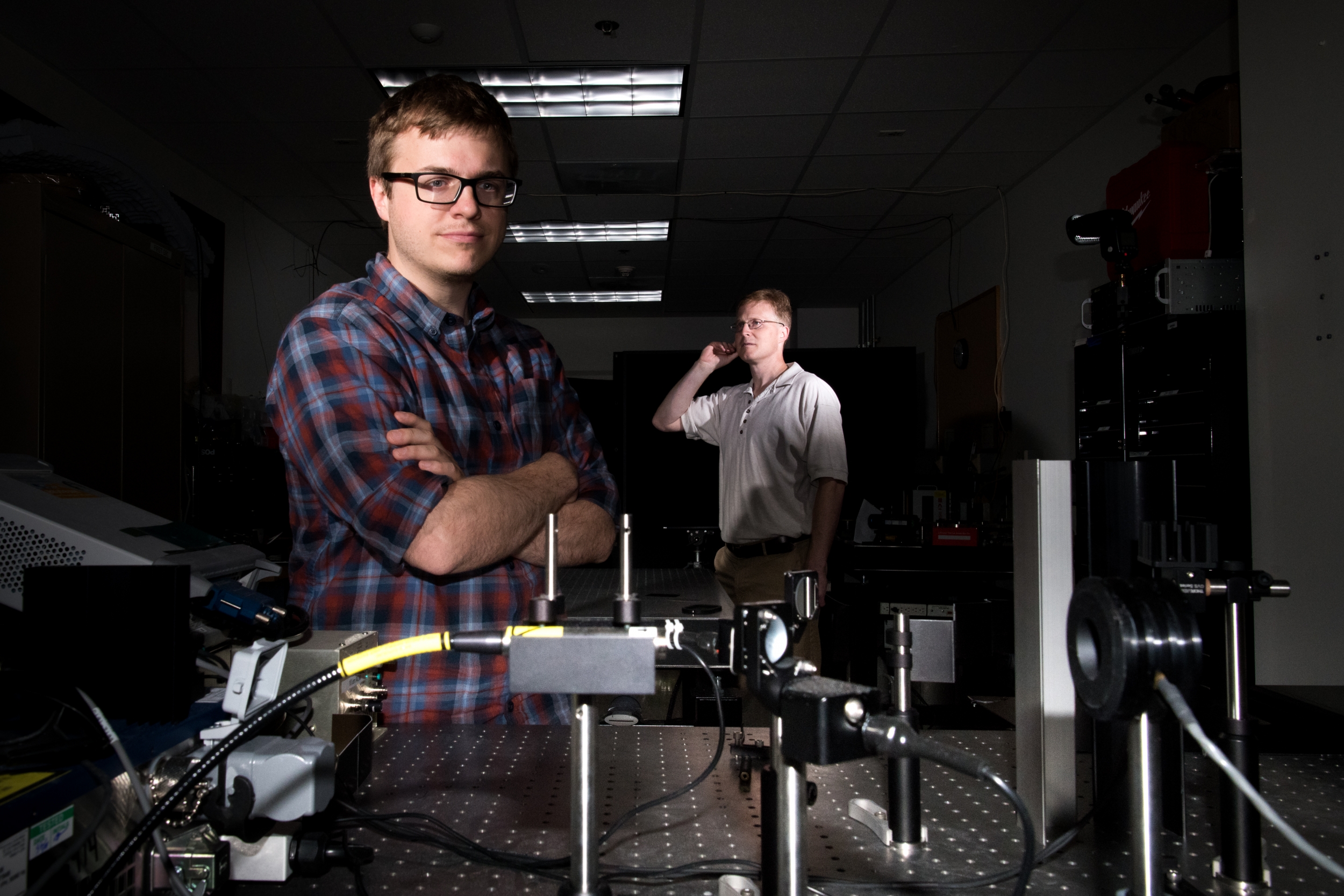A laser can deliver messages directly to your ear from across the room

Have you ever been woken up by someone else's morning alarm? Or, forgetting your headphones, strain to hear a video on your phone on the subway? Or need to get an urgent and discreet message to someone across a crowded room?
MIT Lincoln Laboratory researchers have developed a way to use laser beams to send audible messages, music, or other sounds directly to a specific person's ear from a distance. With their technique, that alarm could blare only at whoever set it, the video's audio could stream into your ear as if from a headphone, and your message could be heard immediately by that person without alerting others nearby.
The Laboratory technique relies on the photoacoustic effect, in which the absorption of light by a material produces sound. The material in this case is water vapor, hanging in the air and in the vicinity of a person's ear. The researchers found that water vapor strongly absorbs light at the infrared wavelength of 1907 nanometers, strong enough for the photoacoustic effect to still work even in environments with low humidity.
Using a thulium laser at that wavelength, they transmitted sounds at 60 decibels — the volume of a typical conversation — to a target person standing about eight feet away. The person used no receiving equipment other than ears to hear the message. The entire communication was invisible and silent to everyone else in the room.
"It's the first time such a technique can be used safely around humans," said Charles Wynn, a technical staff member in the Advanced Capabilities and Technologies Group. "At the wavelengths and intensities used, the laser will not cause injury if its grazes eyes or skin."
In a paper about this work, the researchers describe exploring two different photoacoustic-based techniques to create the sounds. The first technique, which encodes the audio message by modulating the power of the laser beam, provides a message with good clarity but is audible to anyone that crosses the path of the beam.
With the second technique, the message is only audible both in a specific direction and at a specific distance from the transmitter, so it would be heard only by a targeted individual. If other people were to cross the beam's path, they would simply block the message from reaching its recipient, not overhear it. This approach is what the Laboratory team used for the demonstration.
"The second method involves using a rotating mirror to sweep the laser beam in an arc, like swinging a flashlight beam with a flick of the wrist," said Ryan Sullenberger, who developed the system with Wynn. The message is encoded in the length of these sweeps, which are translated to audible pitches once sound is produced. To make the sound heard at a particular distance from the transmitter, the user chooses a certain speed for the mirror to rotate. Depending on that speed, light at a point down the beam (ideally where the target is standing) will sweep back and forth at the speed of sound. Once the sweeps hit Mach 1, a strong audio signal is produced.
Eavesdropping would be hard. In the team's demonstrated example, someone's ear, or another type of intercepting receiver, would have to be an inch away from the intended recipient's ear to get a chance at hearing the message.
Beyond for applications of convenience, the technology could have more serious uses, such as sending a direct warning to people of an active shooter. The system could also supplement systems that use lasers to warn people to stay out of restricted or dangerous areas by also using the lasers to carry an audible warning.
The researchers are now planning to demonstrate their photoacoustic communication method at different ranges and outside a laboratory setting. The transmitter for their first demonstration was built of easily obtainable, commercial parts; scaling the transmitter size down could allow it to be integrated with a smartphone for shorter-range communication, for example, and scaling up could enable longer-range communications.
The magazine R&D World recently named this technology one of the year's 100 most innovative new technologies worldwide.
“We hope that this will eventually become a commercial technology,” Sullenberger said. “There are a lot of exciting possibilities, and we want to develop the communication technology in ways that are useful.”